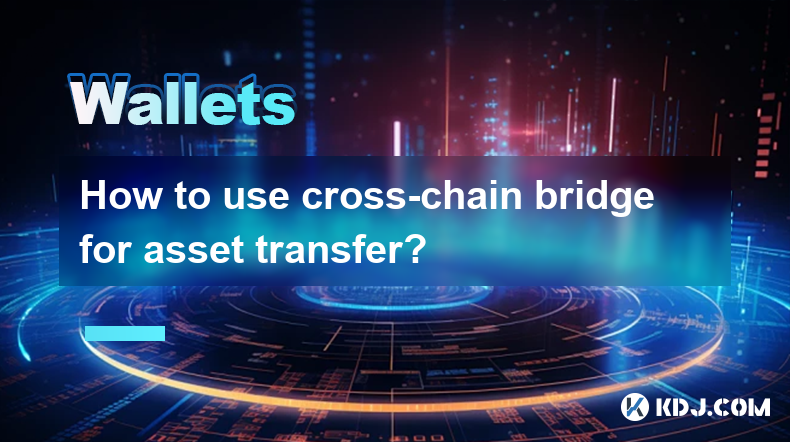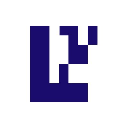-
 Bitcoin
Bitcoin $102,704.6875
5.91% -
 Ethereum
Ethereum $2,198.7835
21.30% -
 Tether USDt
Tether USDt $0.9999
-0.02% -
 XRP
XRP $2.3086
8.73% -
 BNB
BNB $625.6336
3.94% -
 Solana
Solana $162.7575
10.41% -
 USDC
USDC $0.9999
-0.01% -
 Dogecoin
Dogecoin $0.1955
13.57% -
 Cardano
Cardano $0.7610
13.34% -
 TRON
TRON $0.2567
3.03% -
 Sui
Sui $4.0058
20.22% -
 Chainlink
Chainlink $15.7760
13.86% -
 Avalanche
Avalanche $22.2168
13.68% -
 Stellar
Stellar $0.2910
11.97% -
 Shiba Inu
Shiba Inu $0.0...01424
11.63% -
 Bitcoin Cash
Bitcoin Cash $417.0051
8.54% -
 Hedera
Hedera $0.1942
10.75% -
 UNUS SED LEO
UNUS SED LEO $8.8439
0.31% -
 Toncoin
Toncoin $3.1932
6.20% -
 Hyperliquid
Hyperliquid $23.0307
9.69% -
 Litecoin
Litecoin $94.2072
4.28% -
 Polkadot
Polkadot $4.4476
11.80% -
 Monero
Monero $297.2932
5.57% -
 Dai
Dai $1.0001
0.00% -
 Bitget Token
Bitget Token $4.4919
6.24% -
 Ethena USDe
Ethena USDe $0.9999
-0.08% -
 Pi
Pi $0.6721
14.17% -
 Pepe
Pepe $0.0...01099
33.37% -
 Uniswap
Uniswap $6.0416
24.48% -
 Bittensor
Bittensor $423.2384
15.83%
How to use cross-chain bridge for asset transfer?
By leveraging cross-chain bridges like Polygon Network, Binance Bridge, and others, individuals can seamlessly transfer assets between diverse blockchains, such as Ethereum and Polygon, facilitating interoperability and expanding investment opportunities.
Feb 21, 2025 at 01:07 am

How to Use Cross-Chain Bridge for Asset Transfer: A Detailed Guide
Key Points:
- Understand the concept of cross-chain bridges and their role in facilitating asset transfers between different blockchains.
- Learn the steps involved in using a cross-chain bridge for asset transfer, including selecting the bridge, preparing the assets, and executing the transfer.
- Explore various cross-chain bridge providers with their unique features and considerations.
- Address common concerns and address potential risks associated with cross-chain asset transfers.
Step-by-Step Guide to Using Cross-Chain Bridge
1. Choose a Cross-Chain Bridge Provider:
- Research different cross-chain bridge providers, considering their security measures, supported blockchains, and fees.
- Popular bridges include Polygon Network, Binance Bridge, and Multichain.
- Each bridge may have different features, such as support for specific token types or blockchains.
2. Prepare the Assets for Transfer:
- Ensure that the assets you wish to transfer are supported by the chosen bridge.
- Prepare a compatible wallet that supports both the origin and destination blockchains.
- Verify the wallet addresses and asset amounts carefully to avoid errors.
3. Initiate the Bridge Transfer:
- Select the bridge interface and connect your wallet.
- Choose the origin and destination blockchains, as well as the specific token you want to transfer.
- Enter the amount you want to transfer and confirm the transaction.
4. Confirmation and Finalization:
- The bridge will initiate the transfer process, which may take some time depending on the bridge and blockchain network congestion.
- After confirmation from the blockchain network, the assets will be transferred to the destination wallet.
- Monitor the transaction status through the bridge interface or blockchain explorer.
Cross-Chain Bridge Providers and Features
1. Polygon Network:
- A Layer-2 solution for Ethereum that enables faster and cheaper transactions.
- Supports transfers between Ethereum and Polygon, as well as other integrated blockchains.
- Features low gas fees and high transaction speeds.
2. Binance Bridge:
- A proprietary bridge developed by Binance, one of the largest cryptocurrency exchanges.
- Supports a wide range of blockchains, including Ethereum, Binance Smart Chain, and others.
- Offers a user-friendly interface and provides liquidity for various tokens.
3. Multichain:
- A fully decentralized cross-chain bridge aggregation protocol.
- Supports transfers between over 50 different blockchains, including Ethereum, Polygon, and Binance Smart Chain.
- Features a secure multi-signature mechanism and automated routing for optimal transfer routes.
4. Wanchain:
- A public blockchain focused on interoperability and cross-chain asset transfers.
- Supports transfers between Ethereum, Bitcoin, and its native blockchain.
- Uses a novel consensus mechanism called Gravity Consensus for secure and decentralized bridging.
5. Thorchain:
- A decentralized liquidity pool protocol that enables cross-chain asset swaps without the need for intermediaries.
- Provides direct trading between various cryptocurrencies, including BTC, ETH, and BNB.
- Offers non-custodial trading and uses a bonding mechanism to incentivize liquidity providers.
Common Concerns and Potential Risks
1. Security Concerns:
- Cross-chain bridges are potential targets for hackers and malicious actors.
- Ensure that you use reputable bridges with strong security measures and audit reports.
- Keep your wallet private keys and seed phrases secure.
2. Network Congestion:
- During peak network usage, cross-chain transfers may experience delays or higher transaction fees.
- Monitor network congestion before initiating a transfer and consider scheduling it during off-peak hours.
3. Interoperability Limitations:
- Not all cross-chain bridges support all tokens or blockchains.
- Check the supported assets and blockchains before choosing a bridge.
- Consider using a bridge aggregator or multiple bridges to maximize interoperability.
FAQs
1. What is the difference between a cross-chain bridge and a wrapped token?
- A cross-chain bridge transfers native assets between different blockchains, while a wrapped token is a tokenized representation of an asset on a different blockchain.
2. How long does a cross-chain transfer typically take?
- Transfer times vary depending on the bridge and blockchain network congestion.
- It can range from a few minutes to several hours.
3. How to choose the right cross-chain bridge for my needs?
- Consider the supported blockchains, token types, fees, and security measures of the different bridges.
- Research bridge providers and read reviews from users to make an informed decision.
Disclaimer:info@kdj.com
The information provided is not trading advice. kdj.com does not assume any responsibility for any investments made based on the information provided in this article. Cryptocurrencies are highly volatile and it is highly recommended that you invest with caution after thorough research!
If you believe that the content used on this website infringes your copyright, please contact us immediately (info@kdj.com) and we will delete it promptly.
- Coinbase's Q1 2025 Earnings Report Disappoints Bullish Expectations in Several Key Areas
- 2025-05-09 09:05:13
- Obol Collective Launches the OBOL Token, Powering the Future of Decentralized Ethereum Staking
- 2025-05-09 09:05:13
- Sun Life Financial Inc. (TSX: SLF) (NYSE: SLF) Declares a Dividend of $0.88 Per Share
- 2025-05-09 09:00:12
- Sun Life Announces Intended Renewal of Normal Course Issuer Bid
- 2025-05-09 09:00:12
- Coinbase (COIN) Q1 CY2025 Highlights: Revenue Falls Short of Expectations, but Sales Rose 24.2% YoY to $2.03B
- 2025-05-09 08:55:12
- BlockDAG (BDAG) Clears Its Third Audit, Prepping for Launch
- 2025-05-09 08:55:12
Related knowledge

How to generate a new address with Trezor Model T? Is there an upper limit?
May 09,2025 at 07:36am
Introduction to Trezor Model TThe Trezor Model T is a highly respected hardware wallet in the cryptocurrency community, known for its robust security features and user-friendly interface. It supports a wide range of cryptocurrencies and allows users to manage their digital assets securely. One of the essential functions of any hardware wallet is the abi...

How to receive Ethereum with Trezor Model T? Where is the address?
May 09,2025 at 06:28am
Receiving Ethereum with a Trezor Model T involves a few straightforward steps that ensure your transactions are secure and your private keys are protected. The Trezor Model T is a popular hardware wallet that supports Ethereum and a variety of other cryptocurrencies. Let's explore how you can receive Ethereum on this device and locate your Ethereum addr...

How to set the PIN code of Trezor Model T? Can it be changed?
May 09,2025 at 07:29am
Setting up and managing the PIN code on your Trezor Model T is an essential aspect of securing your cryptocurrency. The PIN code acts as a primary layer of security, ensuring that only you can access your funds. In this article, we will guide you through the process of setting up your initial PIN code and changing it if necessary. We will also discuss t...

How to connect Trezor Model T to a mobile phone? What apps are supported?
May 09,2025 at 09:21am
Connecting your Trezor Model T to a mobile phone allows you to manage your cryptocurrencies on the go. The process is straightforward and can be completed using the Trezor Suite Lite app, which is available for both Android and iOS devices. In this article, we will guide you through the steps to connect your Trezor Model T to your mobile phone and explo...

What currencies does Trezor Model T support? How to add them?
May 08,2025 at 08:42pm
The Trezor Model T is a popular hardware wallet that supports a wide range of cryptocurrencies, making it a versatile choice for crypto enthusiasts. In this article, we will explore the various currencies supported by the Trezor Model T and provide a detailed guide on how to add them to your wallet. Supported Currencies on Trezor Model TThe Trezor Model...

Does Exodus support DeFi? How to connect to the application?
May 08,2025 at 07:35pm
Does Exodus support DeFi? How to connect to the application? Exodus is a popular multi-asset cryptocurrency wallet that has garnered attention for its user-friendly interface and wide range of supported cryptocurrencies. One of the frequently asked questions by users is whether Exodus supports decentralized finance (DeFi) applications and how to connect...

How to generate a new address with Trezor Model T? Is there an upper limit?
May 09,2025 at 07:36am
Introduction to Trezor Model TThe Trezor Model T is a highly respected hardware wallet in the cryptocurrency community, known for its robust security features and user-friendly interface. It supports a wide range of cryptocurrencies and allows users to manage their digital assets securely. One of the essential functions of any hardware wallet is the abi...

How to receive Ethereum with Trezor Model T? Where is the address?
May 09,2025 at 06:28am
Receiving Ethereum with a Trezor Model T involves a few straightforward steps that ensure your transactions are secure and your private keys are protected. The Trezor Model T is a popular hardware wallet that supports Ethereum and a variety of other cryptocurrencies. Let's explore how you can receive Ethereum on this device and locate your Ethereum addr...

How to set the PIN code of Trezor Model T? Can it be changed?
May 09,2025 at 07:29am
Setting up and managing the PIN code on your Trezor Model T is an essential aspect of securing your cryptocurrency. The PIN code acts as a primary layer of security, ensuring that only you can access your funds. In this article, we will guide you through the process of setting up your initial PIN code and changing it if necessary. We will also discuss t...

How to connect Trezor Model T to a mobile phone? What apps are supported?
May 09,2025 at 09:21am
Connecting your Trezor Model T to a mobile phone allows you to manage your cryptocurrencies on the go. The process is straightforward and can be completed using the Trezor Suite Lite app, which is available for both Android and iOS devices. In this article, we will guide you through the steps to connect your Trezor Model T to your mobile phone and explo...

What currencies does Trezor Model T support? How to add them?
May 08,2025 at 08:42pm
The Trezor Model T is a popular hardware wallet that supports a wide range of cryptocurrencies, making it a versatile choice for crypto enthusiasts. In this article, we will explore the various currencies supported by the Trezor Model T and provide a detailed guide on how to add them to your wallet. Supported Currencies on Trezor Model TThe Trezor Model...

Does Exodus support DeFi? How to connect to the application?
May 08,2025 at 07:35pm
Does Exodus support DeFi? How to connect to the application? Exodus is a popular multi-asset cryptocurrency wallet that has garnered attention for its user-friendly interface and wide range of supported cryptocurrencies. One of the frequently asked questions by users is whether Exodus supports decentralized finance (DeFi) applications and how to connect...
See all articles





















































































